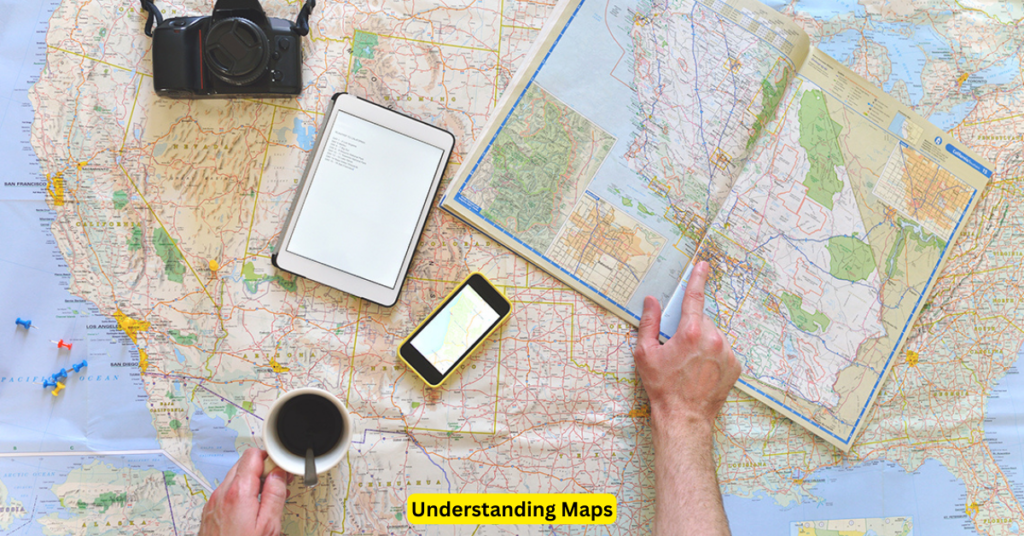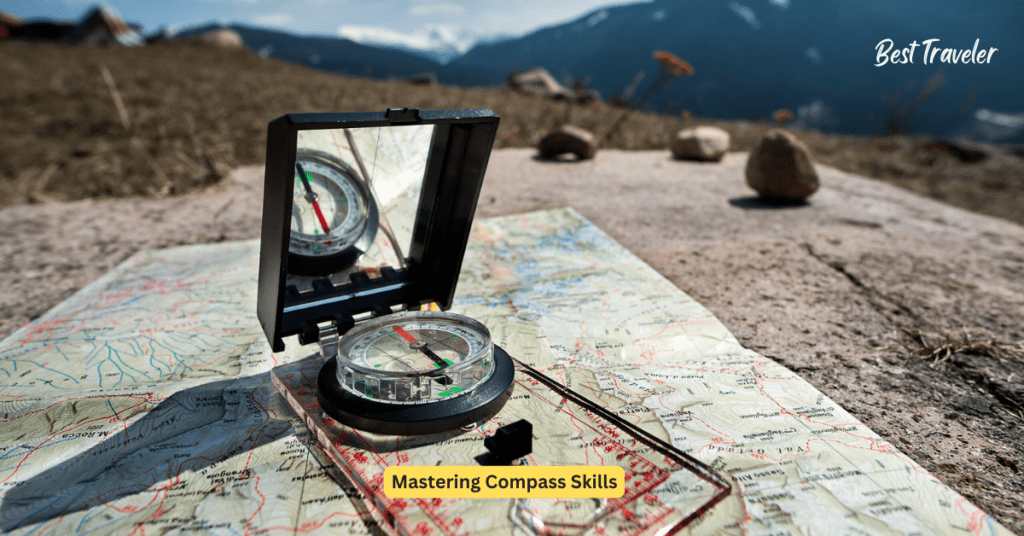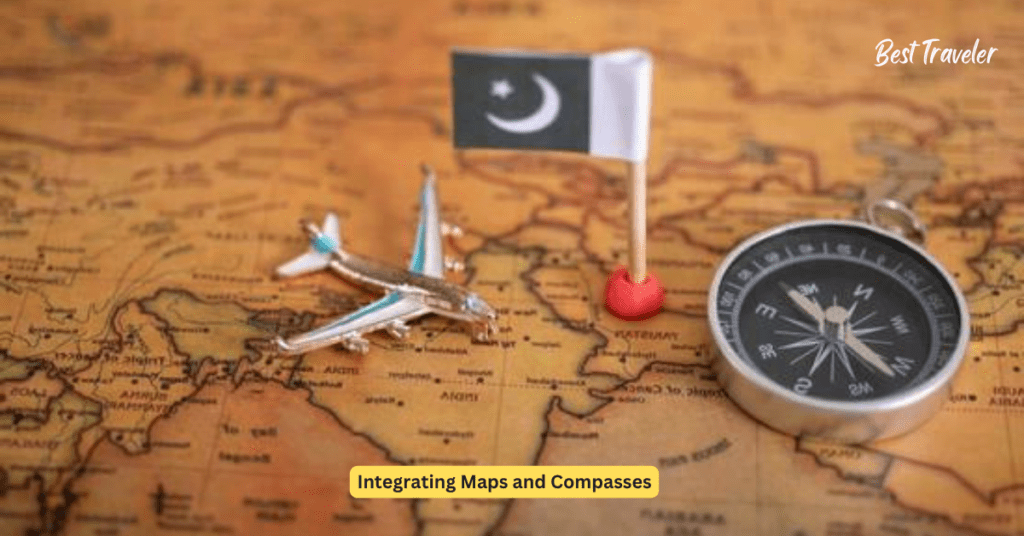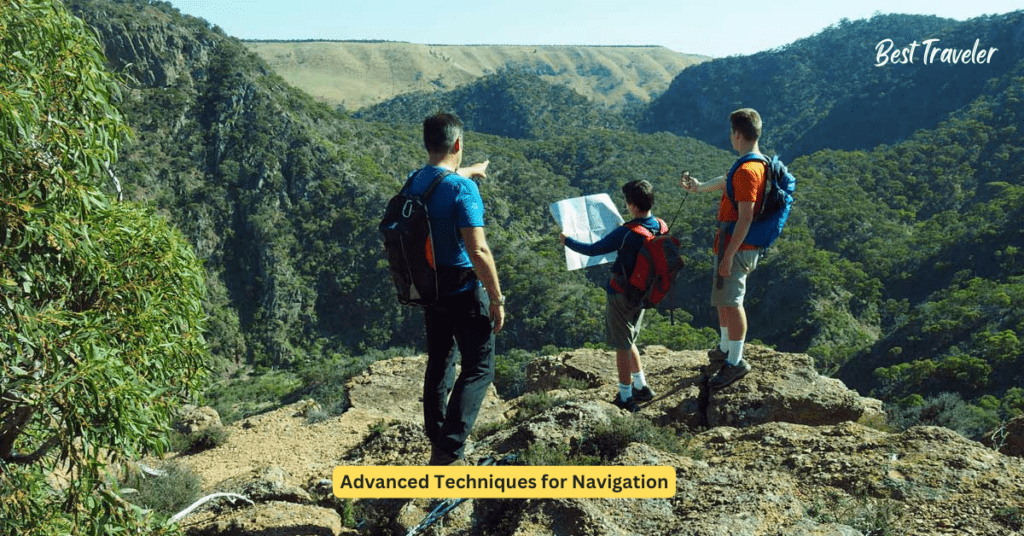Navigation skills are essential for backpackers, enabling them to explore remote areas with confidence and safety. Among the most fundamental tools for navigation are maps and compasses. In this comprehensive guide, we will delve into the intricacies of using maps and compasses effectively, breaking down the process into six parts to facilitate learning and mastery.
Understanding Maps

Maps serve as visual representations of terrain, providing valuable information such as topography, landmarks, trails, and water sources. Understanding the components of a map is crucial for accurate navigation:
- Key Features of Maps:
- Scale: Indicates the relationship between distance on the map and actual distance on the ground.
- Contour Lines: Represent elevation changes, helping to visualize and terrain steepness.
- Legend: Provides symbols and their meanings used on the map.
- Grid Lines: Aid in locating specific points on the map using coordinates.
- Types of Maps:
- Topographic Maps: Detailed maps depicting terrain features, including elevation contours.
- Trail Maps: Focus on hiking trails and points of interest along the trail.
- Aerial Imagery Maps: Satellite images showing terrain and vegetation.
- Map Reading Skills:
- Orienting the Map: Aligning the map with the surrounding landscape using landmarks or a compass.
- Identifying Landmarks: Locating prominent features on the map to determine current location.
- Route Planning: Plotting a course using trails, terrain features, and distances indicated on the map.
Mastering Compass Skills

A compass is a fundamental tool for orienting oneself and determining direction in the wilderness.
- Understanding Compass Components:
- Base Plate: Contains a ruler and direction-of-travel arrow.
- Dial or Bezel: Rotates to align with magnetic north.
- Magnetic Needle: Points towards magnetic north.
- Orienting the Compass:
- Holding the compass level and steady.
- Rotating the bezel to align the orienting arrow with the magnetic needle.
- Ensuring the direction-of-travel arrow points toward the desired direction.
- Taking Bearings:
- Aligning the compass edge with the desired landmark.
- Reading the degree indicated where the direction-of-travel arrow points.
- Transferring the bearing to the map for navigation.
Integrating Maps and Compasses

While maps and compasses are powerful tools individually, their true potential is realized when used together.
- Orienting the Map with a Compass:
- Placing the compass on the map with the edge aligned with grid lines.
- Rotating the map until the magnetic needle aligns with north on the bezel.
- Ensuring the map is oriented to match the surrounding landscape.
- Taking Bearings on the Map:
- Aligning the edge of the compass with the desired landmark on the map.
- Rotating the bezel until the orienting arrow aligns with the magnetic needle.
- Reading the degree indicated on the bezel for the bearing.
- Transferring Bearings to the Compass:
- Rotating the bezel to match the bearing taken from the map.
- Holding the compass level and steady to maintain accuracy.
- Ensuring the direction-of-travel arrow points in the desired direction.
Advanced Techniques for Navigation

In the previous sections, we covered the basics of using maps and compasses for navigation. Now, let’s delve into some advanced techniques that can further enhance your navigation skills as a backpacker.
Triangulation
Triangulation is a technique used to pinpoint your location on a map by using landmarks or features that you can identify from your current position. To perform triangulation, follow these steps:
- Identify three prominent landmarks or features visible from your current location.
- Use your compass to determine the direction to each landmark.
- Plot these directions on your map, drawing lines extending from each landmark.
- Where the lines intersect is your approximate location on the map.
Triangulation requires careful observation and accurate measurements, but it can be an invaluable technique when navigating in unfamiliar terrain.
Terrain Association
Terrain association involves correlating the features of the landscape with those depicted on your map. By recognizing terrain features such as ridges, valleys, and distinctive landmarks, you can confirm your position and navigate more effectively. Here are some tips for terrain association:
- Study the topographic features of your surroundings and compare them to the contour lines on your map.
- Look for distinctive landmarks such as peaks, lakes, or rock formations that are easy to identify on both the map and the ground.
- Use prominent terrain features to orient yourself and maintain awareness of your location as you travel.
Dead Reckoning
Dead reckoning is a method of navigation that involves estimating your position based on your previous known position, your direction of travel, and the distance covered. While not as precise as other techniques, dead reckoning can be useful in situations where visibility is limited or terrain features are scarce. Here’s how to use dead reckoning effectively:
- Start from a known point on your map, such as a trail junction or a prominent landmark.
- Use your compass to determine your direction of travel and estimate the distance you plan to cover.
- Keep track of your progress by counting your steps or using pacing beads to measure distance.
- Periodically check your compass and adjust your course as needed to stay on track.
GPS Navigation
While traditional map and compass navigation remain essential skills for backpackers, Global Positioning System (GPS) devices have become increasingly popular for navigation in recent years. GPS devices use satellite signals to determine your exact location, providing real-time positioning data and navigation assistance. Here are some tips for using GPS devices effectively:
- Familiarize yourself with the features and functions of your GPS device before heading out into the field.
- Use your GPS device in conjunction with a paper map and compass to cross-reference your position and ensure accuracy.
- Be aware of the limitations of GPS technology, such as signal loss in dense vegetation or urban environments.
- Carry extra batteries or a portable solar charger to keep your GPS device powered up during extended trips.
Night Navigation
Navigating at night presents unique challenges for backpackers, as visibility is limited and terrain features may be difficult to distinguish. However, with the right techniques and equipment, it’s possible to navigate safely and effectively after dark. Here are some tips for night navigation:
- Carry a reliable headlamp or flashlight with fresh batteries to illuminate your surroundings.
- Use reflective trail markers or glow sticks to mark your route and aid in navigation.
- Take frequent breaks to check your map and compass and confirm your position.
- Be extra cautious when navigating at night, as it’s easier to become disoriented or lose your way in the dark.
Conclusion & Recap
In conclusion, mastering navigation skills with maps and compasses is essential for backpackers venturing into the wilderness. By understanding maps, compass components, and integrating these tools effectively, backpackers can navigate confidently and safely, even in remote and challenging terrain. Continuously practicing these skills and staying prepared for unexpected situations ensures a successful and enjoyable backpacking experience.
Also Read:
FAQs:
What are navigation skills, and why are they important for backpackers?
Navigation skills involve the ability to use maps, compasses, and other tools to determine one’s location and navigate through unfamiliar terrain. They are crucial for backpackers to ensure they stay on course, reach their destination safely, and make the most of their outdoor adventures.
What tools do I need for navigation as a backpacker?
Essential tools for navigation include topographic maps, a reliable compass, and nowadays, GPS devices or smartphone apps equipped with maps and GPS functionalities. Additionally, having a watch, altimeter, and possibly a satellite communicator can be beneficial for advanced navigation.
How do I read a topographic map?
Reading a topographic map involves understanding contour lines, symbols, and scales to interpret the terrain’s elevation, features, and landmarks accurately. Key elements such as hills, valleys, water bodies, trails, and elevation changes are represented on the map to aid in navigation.
What is the difference between true north and magnetic north?
True north refers to the geographical North Pole, while magnetic north is the direction towards which a compass needle points due to the Earth’s magnetic field. The variation between true north and magnetic north, known as declination, varies depending on your location and must be adjusted for accurate navigation
How do I use a compass for navigation?
Using a compass involves aligning the compass needle with the magnetic north to determine direction accurately. By orienting the map to match the compass’s direction, backpackers can navigate along desired routes, follow bearings, and triangulate their position using prominent landmarks.
Can I rely solely on GPS for navigation?
While GPS devices and smartphone apps offer convenience and precision in navigation, they are not infallible. Factors like battery life, signal loss in remote areas, and device malfunctions can occur. It’s advisable for backpackers to carry a map and compass as backup and to enhance their navigation skills.
How can I improve my navigation skills?
Improving navigation skills requires practice, familiarizing oneself with map reading, compass use, and terrain recognition. Enrolling in navigation courses, joining outdoor clubs, and going on guided hikes can provide valuable hands-on experience and knowledge sharing.
What should I do if I get lost while backpacking?
If you find yourself lost, stay calm and assess your surroundings. Use your map, compass, or GPS device to determine your location based on known landmarks or terrain features. If uncertain, backtrack along your route to a familiar location or find a safe spot to wait for help if necessary.
How do I plan a backpacking trip with navigation in mind?
When planning a backpacking trip, thoroughly research your route, study maps, and consider factors like terrain difficulty, weather conditions, and available water sources. Plot waypoints, checkpoints, and emergency exit routes on your map, and share your itinerary with someone trustworthy before departing.
Are there any advanced navigation techniques for experienced backpackers?
Advanced backpackers may explore techniques like dead reckoning, celestial navigation using stars, or using natural navigation cues such as sun position, wind patterns, and vegetation indicators. These techniques require additional knowledge and practice but can be valuable skills in challenging environments.

